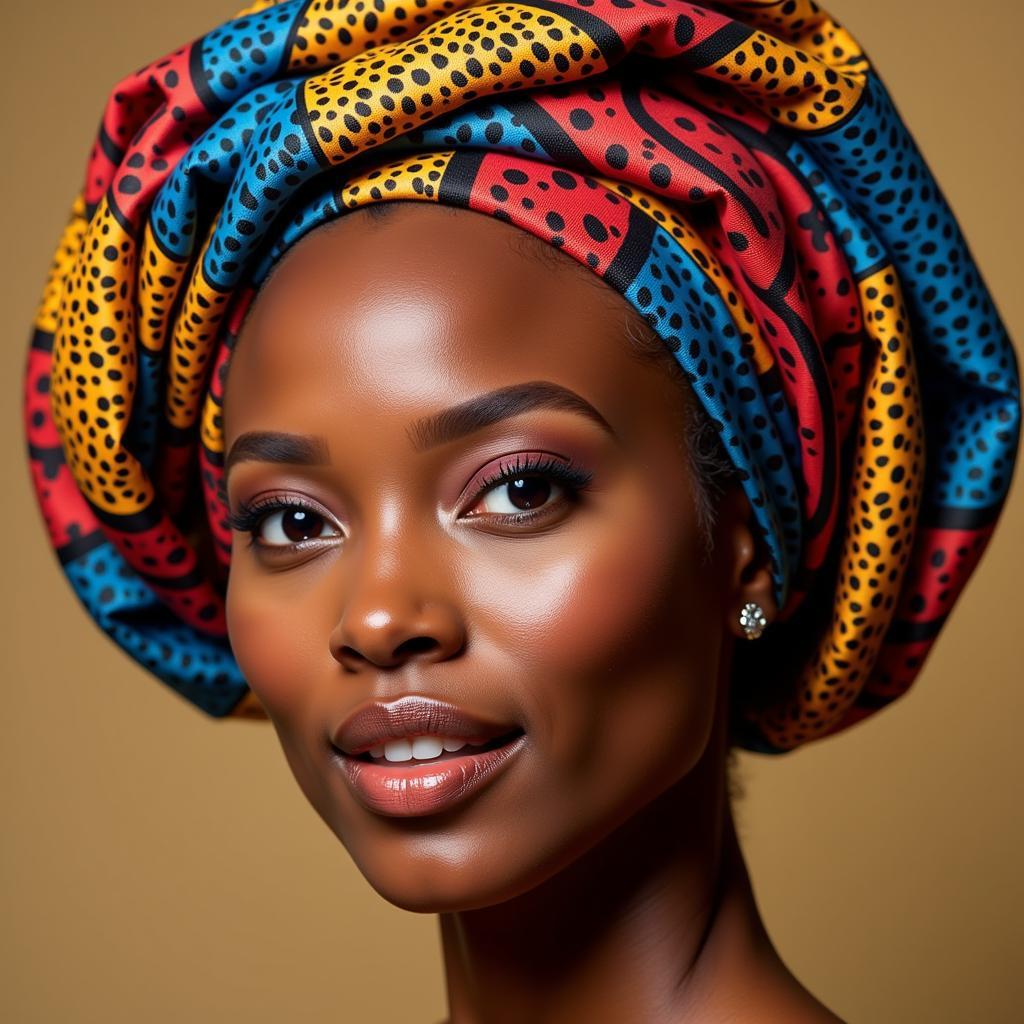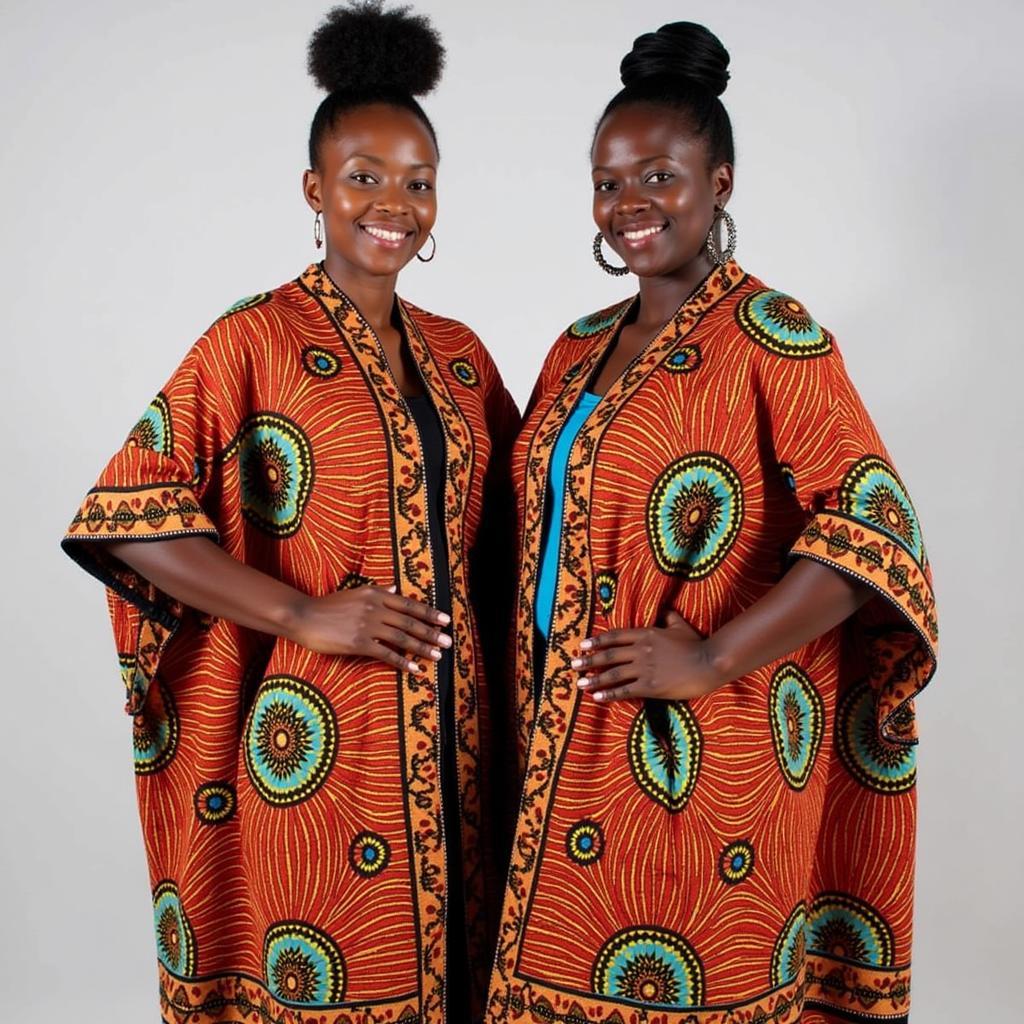Discovering the African Head Scarf: Names, History, and Significance
African head scarves, vibrant and diverse, are more than just a fashion statement. They carry deep cultural significance, reflecting history, identity, and tradition across the continent. These head coverings, known by various names depending on the region and ethnic group, tell a story of heritage and pride.  A vibrant gele headwrap worn by a Nigerian woman during a celebration
A vibrant gele headwrap worn by a Nigerian woman during a celebration
Unveiling the Many Names of the African Head Scarf
The African head scarf boasts a rich tapestry of names, each reflecting the unique cultural context in which it is worn. In Nigeria, the Yoruba people call it “gele,” a term synonymous with elegance and grandeur. The Igbo may refer to it as “ichafu” or “ọkpọkpọ,” while other groups use names like “dhuku.” Moving across West Africa, we find names like “pagne” in Senegal and “foulard” in francophone countries, reflecting the influence of French colonialism. East Africa offers yet another array of names, including “kanga” and “kitenge,” known for their vibrant prints and Swahili sayings.  Two East African women wearing brightly patterned kangas Exploring these diverse names allows us to appreciate the rich linguistic and cultural landscape of Africa.
Two East African women wearing brightly patterned kangas Exploring these diverse names allows us to appreciate the rich linguistic and cultural landscape of Africa.
A Journey Through History: The African Head Scarf’s Enduring Legacy
The history of the African head scarf is intertwined with the continent’s complex past. From ancient kingdoms to colonial times and the present day, the head scarf has played a significant role. It has served as a symbol of status, a marker of marital status, and a practical way to protect hair from the elements. African fashion wear 2019 During the transatlantic slave trade, head scarves were sometimes imposed upon enslaved African women as a form of control and suppression. However, these women transformed the head scarf into a symbol of resistance, using it to communicate, preserve their cultural identity, and express their individuality. This resilience continues to resonate in the way African head scarves are worn today.
The Significance of the African Head Scarf in Contemporary Society
In contemporary Africa, the head scarf remains a powerful symbol of cultural identity and pride. It is worn for various occasions, from everyday life to special celebrations like weddings and religious ceremonies. African american braided hairstyles 2019 The way a head scarf is tied can communicate different messages, reflecting regional traditions, religious affiliations, or even personal style.
How is the African head scarf viewed by different generations?
Older generations often view the head scarf as a symbol of respect and tradition, while younger generations are embracing it as a fashion statement, experimenting with new styles and interpretations. This intergenerational dialogue keeps the tradition alive while allowing for evolution and creativity.
What are the different ways to tie an African head scarf?
There are countless ways to tie an African head scarf, each reflecting regional traditions and individual creativity. From the elaborate gele of Nigeria to the simple yet elegant head wraps of East Africa, the possibilities are endless. African accra print
“The African head scarf is not merely a piece of cloth; it’s a living testament to the resilience, creativity, and cultural richness of African women,” says Adaora Ude, a Nigerian textile artist. “It’s a thread that connects us to our ancestors and empowers us to express our identities in a vibrant and meaningful way.”
Beyond Tradition: The African Head Scarf in the Global Fashion Landscape
The African head scarf’s influence extends beyond the continent, inspiring designers and fashion enthusiasts worldwide. Its vibrant colors, bold patterns, and versatility have made it a coveted accessory in the global fashion scene. African fashion wear
“The African head scarf has become a symbol of empowerment and cultural pride on the global stage,” notes Kenyan fashion designer, Zara Mohammed. “It’s a celebration of African heritage and a reminder of the beauty and diversity of our traditions.” African fashion designers 2019
Conclusion: The Ever-Evolving Story of the African Head Scarf
The African head scarf, with its multitude of names and rich history, continues to evolve, reflecting the dynamism of African culture. It serves as a tangible link to the past, a vibrant expression of the present, and a promise of a future filled with creativity and pride.
FAQ
-
What is the most common name for the African head scarf? There isn’t one single name. It varies by region and ethnic group.
-
What is the significance of the African head scarf? It symbolizes cultural identity, tradition, and often, a woman’s status within her community.
-
Where can I buy authentic African head scarves? You can find them online, in African markets, and from specialized retailers.
-
How can I learn different tying styles? There are numerous tutorials available online and in books.
-
Are there specific occasions for wearing certain head scarves? Yes, some styles are reserved for weddings, funerals, or religious ceremonies.
If you need assistance, please contact us 24/7 at:
Phone: +255768904061
Email: kaka.mag@gmail.com
Address: Mbarali DC Mawindi, Kangaga, Tanzania.
We have a dedicated customer service team ready to help.


